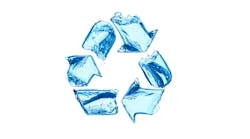With increased customer awareness of water treatment products, it can be difficult to retain a competitive advantage in the industry. One of the new markets we see water treatment dealers tapping into is the indoor air quality (IAQ) industry. With some of the same technologies and a very similar if not identical target market, the expansion seems very intuitive for many dealers we talk to. Recently, we spoke with two established leaders in the IAQ market to get the facts on what you need to know and what you need to convey to your customers if you are moving into IAQ services.
Looking back
When breaking into a new market, regardless of any similarities to your current market, it is important to know the history and consumers’ thoughts about the industry. This is especially important with the IAQ industry, which has grown significantly in terms of mass market appeal and technological innovation in the last decade.
“The market has shifted away from gimmicky, often low cost products and toward products that offer real benefits and real efficacy at the removal of pollutants,” says Tony Kircher, president of Winix America. “I think that there was a time when the air cleaner category was dominated by ionic types of products that didn’t use filters, didn’t really move much air and made a lot of wild claims. And, when it became apparent that the claims that they were making weren’t true, the whole category really suffered.”
But, the industry trend toward low-cost, "gimmicky" products has changed, according to Kircher, moving toward high-quality air cleaners that consumers are willing to spend more money on.
Looking for products certified by The Association of Home Appliance Manufacturers (AHAM), a third-party organization that tests IAQ products and other appliances, is a great way for those moving into the IAQ market to recognize high-quality products and to build trust when educating customers.
Synergies between IAQ and water treatment
The natural links between the water treatment and IAQ industries make it easy for water treatment dealers to expand their reach with IAQ equipment and services. Some of the technologies are similar, the basic business model is the same and the type of customer is also usually the same.
“If you currently offer a product or service that is tied to your customers’ health, comfort, safety or well-being, then you will have a much greater opportunity to transition into providing them an IAQ product or service because they are your target market,” explains Terry Wright, president of Wright Way Environmental Technologies.
“You already have a relationship with your customers; you are already a trusted advisor on a product that is concerned with providing safe and healthy water. You probably already have a business model that includes installed equipment along with regular service and filter replacement,” notes Kircher. “It seems a natural extension to be able to say, ‘now that we have taken care of your water quality, let’s talk about the air quality in your home.'”
According to Kircher, both water and air quality have become more challenging, in-demand markets with increased industrialization, population levels and urbanization that make polluted air and water more common. Just as with water quality, there are many price points and quality levels for consumers to consider. However, the customers that prefer a reverse osmosis (RO) filter over a pitcher you put in your fridge may also see the value in more personalized, quality IAQ products.
“When you add a complementary IAQ business to your current offerings you are creating a stronger bond with your customer,” asserts Wright. “You have created a reason for that customer to have multiple contacts with you throughout the year.”
And, those additional contacts, according to Wright, are worth thousands of dollars in saved advertising dollars and service time and cost for the dealer.
The basics of IAQ
The need for IAQ equipment has grown, partly because of increased pollutants in an urbanized world, but also due to a host of other factors. It may seem ironic that energy efficiency would cause the need for indoor air filtration, but as Wright explains, it is one of the leading reasons people need IAQ products.
“We seal our homes and buildings as tight as possible to keep our heating and cooling costs down,” says Wright. "This causes a lack of ventilation or fresh air from entering the building. Instead of fresh air being introduced, the same contaminated air keeps circulating through the already contaminated structure. Increasingly energy efficient homes and offices have created interiors that are a virtual soup of odors, chemicals and bacteriological contaminants from indoor pollutants. Americans spend 90 percent of their time indoors and often the quality of air is worse than what we find outdoors.”
Allergies, including asthma, are the sixth leading cause of chronic illness in the U.S., according to the Centers for Disease Control and Prevention (CDC); and most of these allergies, according to Wright and Kircher, are the result of air constantly polluted with pet dander, dust and mold.
“The greatest need that we see is usually in the area of allergens such as pollen, pet dander and dust,” adds Kircher. “We also see people trying to solve specific problems such as odors from pets or living with a smoker.”
Cigarette smoke is not only an allergen that can aggravate asthma, it is also an industry standard for particulate removal comparisons. Due to the small size of the particles and consumer familiarity with the appearance, odor and nuisance of cigarette smoke, it is a useful example to use with consumers to explain the capabilities of a particular filter, according to Kircher. In addition, AHAM uses cigarette smoke to test the efficacy of air cleaners.
“If you have smog, if you have dust, if you have pet dander, the particles in all of those things are larger than cigarette smoke,” explains Kircher. “So if you’re removing that, you’re going to be really good at removing the other things also.”
The IAQ market heats up in the spring and the fall, according to Kircher, due to allergens like pollen, mold and dust. Natural disasters like wildfires also cause an uptick in sales because of smoke pollution.
Beyond particulates like allergens, chemicals and microbiological contaminants can also be issues in air quality, according to Wright.
In deciding which products a customer needs to improve indoor air quality, therefore, it is important to consider what they want to remove from the air and the amount of existing air circulation in the home. It is also essential to look at the air volume in the home and the efficacy of the filtration, according to Kircher.
IAQ technology
Since every customer has different reasons to buy IAQ products, there are many specialized technologies within the industry that remove particular pollutants from the air. Every air cleaner starts with a fan and a filter, but high efficiency particulate air (HEPA), activated carbon and plasma filtration are the three need-to-know technologies within the IAQ market.
“True” HEPA filtration is an industry designation for the highest grade of HEPA filtration available, according to Kircher. True HEPA captures at least 99.9 percent of particles as small as 0.3 microns in size. “[HEPA] will filter out something as small as the particles that are in cigarette smoke [and is the] industry standard for removing particulates,” Kircher notes, adding that activated carbon, on the other hand, is “the industry standard for removing odor-causing volatile organic compounds (VOCs)," such as animal, cooking or musty odors.
Because carbon filter technology is widely used in the water treatment industry, it is an easy transition for water treatment dealers.
“Beyond that there are some really innovative technologies, such as plasma, that can attack both organic and inorganic pollutants,” adds Kircher. “It actually breaks apart some of the VOCs, some of the chemical vapors and viruses even. It will break them apart and render them harmless. So, it actually attacks the pollutant itself rather than just removing it or filtering it.”
Plasma is not being used en masse at the moment, but it represents the highest level of air filtration, followed by activated carbon and then by true HEPA filtration.
Industry growth
In addition to the many synergies between the two markets, now is an opportune time for water treatment dealers to move into the IAQ market, according to our experts. This is due to an increased focus by the government and healthcare organizations on educating consumers about the health effects of air quality and in turn, greater consumer knowledge on which products are of the best quality to improve their air quality.
Wright cited the U.S. Green Building Council (USGBC) Leadership in Energy and Environmental Design (LEED) program, which stresses the need for ventilation and technologies that provide whole-house air purification, the California Energy Commission’s regulation requiring mechanical ventilation systems in all new homes after 2010 and the U.S. Environmental Protection Agency (EPA) educational materials calling IAQ one of the top five health hazards.
“The U.S. government, national health organizations and major U.S. corporations have teamed together spending millions of dollars educating the public,” says Wright. “Do you know of any other business where you get millions of advertising dollars spent on declaring the need for your new business, at no cost to you?”
Many water treatment dealers are familiar with the IAQ market and are tapping into its current growth. Your customers already see you as an expert in water quality. But, warns Wright, to avoid losing customers’ trust, it is important to fully educate yourself on how to test air quality, which products are best and which technologies are most ideal for specific situations and where a unit should be placed depending on the building in question before you start talking to your customers about IAQ services. Seeking out the necessary training on IAQ can lead to a competitive advantage over other businesses similar to your own, with minimal difficulties transitioning into a new market.


